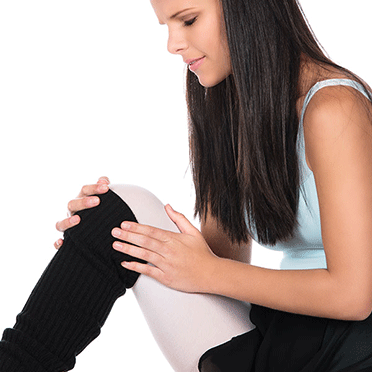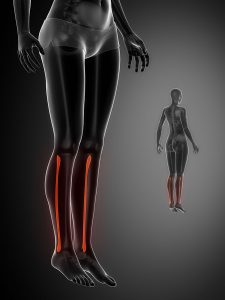Ligaments are the connective tissues that help to hold your joints in the correct position and resist excessive movement – they attach bone to bone on either side of a joint to provide stability.
Torn ligament injuries
Aside from the more ‘publicized’ ligament injuries, such as a ruptured Anterior Cruciate Ligament (ACL) it is also very common to damage the ligaments in all your peripheral joints when they are exposed too much impact or force. Some ligament tears will require surgery to re-attach the ligament, though happily this is relatively rare and the majority can be managed without going under the knife.
Owing to the fact that ligaments stabilize your joints, severe pain can be experienced when strain is put on a torn ligament. The joint will not be supported by these ligaments and will move beyond its normal boundaries. The joint itself will be painful apart from the force put through the torn ligament. This is the case whether it is your ankle, knee, wrist, elbow or shoulder (or any other joint).
It is also possible to damage the ligaments in your back as the result of a fall or twist. Recovering from ligament tear tends to be longer than muscle tear. The blood supply to ligaments is very poor as compared to the blood supply that muscles receive. As a result the rate of healing tends to be slower.
Untreated injuries
Left untreated there is no guarantee that the ligaments will ‘sort themselves out’, and long term problems are not uncommon in patients that go without treatment. Fortunately, our background in professional sports means we have extensive experience of dealing with all manner of ligament injuries.
Though you may not be a professional athlete, your body will repair in the same physiological way, which means we can provide you with the same elite level of treatment and rehabilitation to get the results you want fast. We use proactive, intensive manual therapy and manipulation techniques to impact on your injury, and then rehabilitate so you’re ready to get back to your sport fully fit. No wondering if you’ll be ok, no hesitancy – we will provide the treatment and rehabilitation you need to get you from plinth to pitch and ready for action.
Get the help you really need
Medical professionals that care about you
Symptoms of a ligament tear
- Sharp sudden pain able to pinpoint to one specific spot
- Mild or severe swelling
- Pain when doing a specific moment
- Unable to put weight on the foot/ hands
- Muscle tightness surrounding the joint
- Sharp pain when stretched/ moved
- Pinching feeling at end of range

Types of Torn Ligaments

Gr 2 (Incomplete tear)
- Mild to severe pain
- Always bleeding present
- Mild to severe swelling
- Pain through the range]
- Pain through the stretch
- Unable to put weight on leg
- Physio
Gr 3 (Complete Tear)
- Can be pain fee(due to nerve injury no pain is felt)
- Severe bleeding and bruising
- Severe swelling
- Pain free
- No resistance in stretch, continue to move past its normal range
- Visible deformity, unable to put weight on leg
- Hospital/ Doctor
Get to the root cause of your problem
Our team of experts guide you to heal
Sprained Ligament
Sprained Ligaments are a tear or over stretch of the thick fibrous tissue that connect the bones at a joint. This is usually due to an overload or overstretch on the ligament. The most common joint where the ligaments are sprained are in the ankle. When the ankle gets twisted beyond its normal movement, the ligament cannot support the weight of your body and the ligament overstretches and in the worst case, tears rite through.
In most cases the ligaments are still attached even though some of the fibres are torn. Most ligament sprains also involve severe swelling and bleeding inside and around the joint. This gives us an vital information as to how far the ligament was stretched in order to rupture the arteries and veins in the area.
The order in which structures tear under force:
1. Arteries & Veins are very elastic but not very strong to resist excessive movement (swelling & bleeding)
2. Muscle are very elastic and acts to absorb the forces around a joint. (muscle stiffness)
3. Tendons are not elastic but provides stability to a joint like a pulley. (unable to move through range)
4. Ligaments are rigid and has to resist high loads of force and limits joint movement to normal range. (sharp pain on stretch)
5. Bone (fractures could be present)
Understand that then a ligament is sprained, the Veins, muscle and tendons over the joint will be injured as well.

SKILLED EXPERIENCED MEDICAL PROFESSIONALS
“If you’re concerned, we diagnose your problem and treat it
Let us check it and determine the damage”
If you’re suffering from pain after trauma or even surgery, you are at the right place. We treat all kinds of injury and damage to tissues like muscle, joint, tendon, ligament and nerves. Sign up for treatment today.
Treatment Ligament Tear
If the swelling does not subside within 72 hours, seek medical attention.
All emergency medical professionals are able to diagnose the injury to a ligament. When a ligament is injured, the faster you get it assessed, the better. The reason why we say this is so that the physio or doctor can quickly test which ligaments are torn, and how badly they are damaged.
Within the first hour after the injury your foot will swell like a balloon, making accurate diagnosis very difficult in the coming days.
Torn ligament pain depends on the injured structure within the joint. Symptoms & movements indicate which ligament might be injured and to what expect. Types of torn ligaments, Physiotherapist experts in treating ligament tears in Pretoria.

